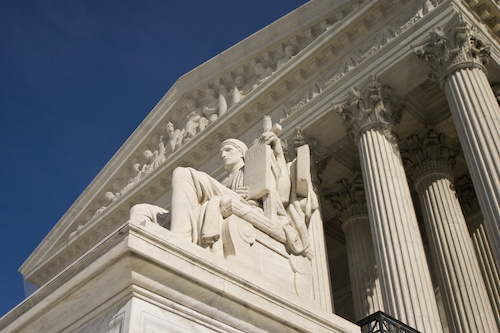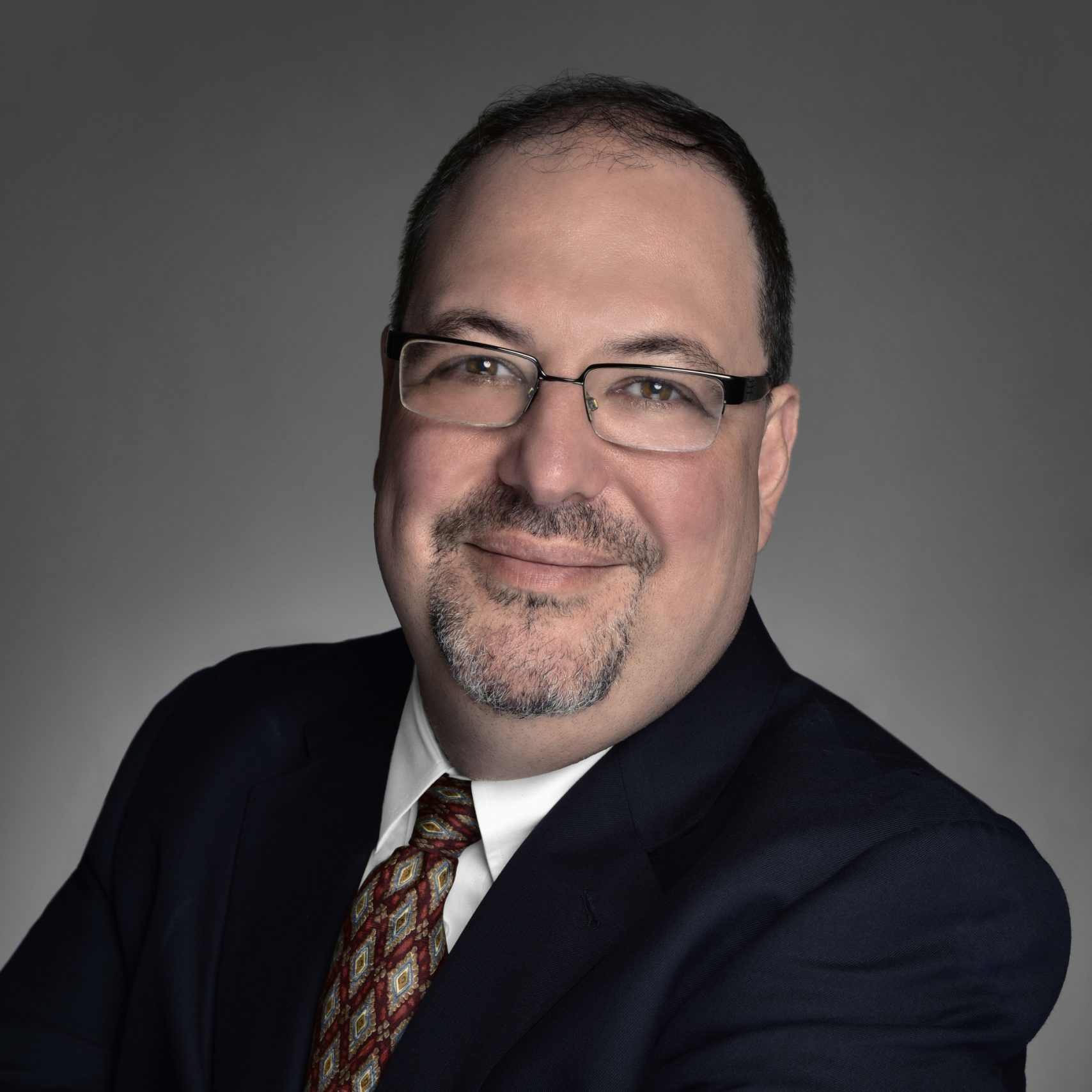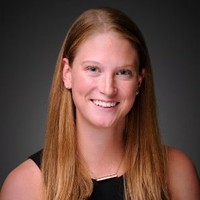“Since the claims at issue [in American Axle] are comparable to the claims found by this Court to be patent eligible in Diehr, which recited an industrial process that used a natural law, this case presents an excellent vehicle for the Supreme Court to clarify the unambiguous scope of Section 101.”
 On January 25, 2021, the New York Intellectual Property Law Association (NYIPLA) filed an amicus brief urging the U.S. Supreme Court to grant the writ of certiorari in American Axle & Manufacturing Co. Inc. v. Neapco Holdings LLC, No. 20-891. The brief argues that the American Axle case is factually very similar to Diamond v. Diehr, 450 U.S. 175, 187 (1981), which “recognized that claims, including a calculation based on the Arrhenius equation as part of larger process for curing rubber, were patent eligible.”
On January 25, 2021, the New York Intellectual Property Law Association (NYIPLA) filed an amicus brief urging the U.S. Supreme Court to grant the writ of certiorari in American Axle & Manufacturing Co. Inc. v. Neapco Holdings LLC, No. 20-891. The brief argues that the American Axle case is factually very similar to Diamond v. Diehr, 450 U.S. 175, 187 (1981), which “recognized that claims, including a calculation based on the Arrhenius equation as part of larger process for curing rubber, were patent eligible.”
As background, in American Axle & Mfg., Inc. v. Neapco Holdings LLC, No. 18-1763, 967 F.3d 1285 (Fed. Cir. 2019), modified, 966 F.3d 1347 (Fed. Cir. 2020), a Federal Circuit panel affirmed the district court’s finding that the asserted claims, directed to methods for manufacturing an improved driveshaft for an automobile, were ineligible as they invoked “nothing more” than a natural law, “Hooke’s Law”. An equally-divided (6-6 split) Federal Circuit denied rehearing en banc.
Although the NYIPLA offers no opinion on the merit of the claims at issue, it asks the Supreme Court to accept the petition and address the following questions presented by Petitioner American Axle:
- What is the appropriate standard for determining whether a patent claim is “directed to” a patent-ineligible concept under step 1 of the Court’s two-step framework for determining whether an invention is eligible for patenting under 35 U.S.C. § 101?
- Is patent eligibility (at each step of the Court’s two-step framework) a question of law for the court based on the scope of the claims or a question of fact for the jury based on the state of the art at the time of the patent?
In its brief, the NYIPLA urges the U.S. Supreme Court to grant certiorari to clarify the law of patent eligibility, since, despite the plain and clear language of Section 101 of Title 35, there are conflicting interpretations of Supreme Court precedent on patent-eligible subject matter.
Courts are Divided as to How to Apply Subject Matter Eligibility Precedent
A split (2-1) Federal Circuit panel, in affirming the district court’s holding, found the claims in question—directed to a new and useful industrial process for manufacturing an improved driveshaft for an automobile—ineligible for patenting as merely invoking a natural law, and nothing more. American Axle, 967 F.3d at 1304.
However, “an invention is not rendered ineligible for patent [protection] simply because it involves an abstract concept.” Alice Corp. Pty. Ltd. v. CLS Bank Int’l, 573 U.S. 208, 217 (2014). Under the Supreme Court’s established judicial exceptions to patentability, a claim directed to an application of a law of nature can be found patent eligible. Diamond v. Diehr, 450 U.S. 175, 187 (1981).
The line between whether a claim is merely directed to a natural law or is directed to a practical application of that natural law was most clearly drawn in the Supreme Court’s decision in Diehr. There, the Supreme Court held that comparable claims reciting an industrial process for curing rubber that used Arrhenius equation (a natural law), were “[i]ndustrial processes [of] the type[]s which have historically been eligible to receive the protection of our patent laws.” Id. at 184.
Nevertheless, despite such precedent, a split Federal Circuit panel held the claims in question—similarly directed to a new and useful industrial process—ineligible for patenting simply because they “invoke natural laws, and nothing more.” American Axle, 967 F.3d at 1304. Thus, as further evidenced by the fact that half of the active Federal Circuit judges dissented from the denial of rehearing en banc, it is clear the Federal Circuit is divided as to how to apply Supreme Court Section 101 jurisprudence.
Further, the United States Patent and Trademark Office’s (USPTO) recognition that “[t]he growing body of precedent has become increasingly more difficult for examiners to apply in a predictable manner” and its attempt to derive a uniform set of guidelines in order to prevent inconsistent results, is indicative of the Supreme Court’s need to clarify its Section 101 jurisprudence. See 2019 Revised Patent Subject Matter Eligibility Guidance, 84 Fed. Reg. 50, 51-52 (Jan. 7, 2019).
Consistent Application of the Law Regarding Patent-Eligible Subject Matter Is Crucial
Consistency in precedent is necessary to provide reliable judgments to avoid the harmful effects unpredictability and confusion as to eligible subject matter have on the economy, the patent system as a whole, and to inventors, business entities, investors, innovators attempting design around solutions, and other interested parties who need to understand what is, and is not, patentable.
This Is the Proper Case to Consider the Issue of Patent Eligibility
Since the claims at issue are comparable to the claims found by this Court to be patent eligible in Diehr, which recited an industrial process that used a natural law, this case presents an excellent vehicle for the Supreme Court to clarify the unambiguous scope of Section 101.
In addition, this case has already garnered considerable input from third party amici curiae, who filed briefs in support of American Axle’s petition for rehearing en banc at the Federal Circuit, representing the views of patent practitioners, intellectual property owners, and innovators.
Clarification is Crucial
Since the Supreme Court’s decision in Alice, Section 101 has been applied in thousands of cases at the Federal Circuit, district courts, and the Patent Trial and Appeal Board, where the breadth of opinions offered are vast, diverse, and, as the USPTO notes, results in “similar subject matter [having] been described both as abstract and not abstract in different cases.” 2019 Revised Guidance, 84 Fed. Reg. at 52.
It is evident that the Federal Circuit is split on how to properly interpret Supreme Court Section 101 jurisprudence, making clear the need for further Supreme Court clarification and guidance as to the scope of Section 101.
Counsel for the NYIPLA on the brief include Charles R. Macedo, principal counsel, David P. Goldberg and Chandler E. Sturm from Amster, Rothstein & Ebenstein LLP, Colman B. Ragan, President of the New York Intellectual Property Law Association, Robert M. Isackson and Melvin C. Garner from Leason Ellis LLP, Robert J. Rando from Taylor English Duma LLP, Thomas Landman from Wiggin and Dana LLP, William J. Thomashower from Pryor Cashman LLP, Kathleen Waybourn from the Law Office of Kathleen A. Waybourn, and Ksenia Takhistova.
Image rights acquired through AdobeStock.

![[IPWatchdog Logo]](https://ipwatchdog.com/wp-content/themes/IPWatchdog%20-%202023/assets/images/temp/logo-small@2x.png)



![[Advertisement]](https://ipwatchdog.com/wp-content/uploads/2024/04/Artificial-Intelligence-2024-REPLAY-sidebar-700x500-corrected.jpg)
![[Advertisement]](https://ipwatchdog.com/wp-content/uploads/2024/04/UnitedLex-May-2-2024-sidebar-700x500-1.jpg)
![[Advertisement]](https://ipwatchdog.com/wp-content/uploads/2024/04/Patent-Litigation-Masters-2024-sidebar-700x500-1.jpg)

![[Advertisement]](https://ipwatchdog.com/wp-content/uploads/2021/12/WEBINAR-336-x-280-px.png)
![[Advertisement]](https://ipwatchdog.com/wp-content/uploads/2021/12/2021-Patent-Practice-on-Demand-recorded-Feb-2021-336-x-280.jpg)
![[Advertisement]](https://ipwatchdog.com/wp-content/uploads/2021/12/Ad-4-The-Invent-Patent-System™.png)






Join the Discussion
9 comments so far.
Paul Johnson
February 6, 2021 12:08 pmSo how is the Federal Circuit divided?
Ineligible:
– Dyk, AB
– Wallach, BA
– Taranto, BA
– Chen, BSEE
Eligible:
– Newman, PhD (Chem)
– O’Malley, AB
– Reyna, BA
– Stoll, BSEE
– Moore, BSEE
– Lourie, MSc (Chem)
Pro Say
January 29, 2021 02:33 pmMax: “Can you offer a more persuasive exhortation?”
For an overarching, applicable-always-and-everywhere exhortation — no. (though comedian Larry the Cable Guy’s: “Git er done!” works pretty well)
For the issue at hand, however, I’ll go with:
“Eligibility up!”
MaxDrei
January 29, 2021 05:28 amJust to flesh out my Comment #1 above:
For me, the Question 2 wording “at the time of the patent” is key to the problematic issue how much account should there be, when assessing eligibility, of the pre-existing content of the useful arts. You can think of it as a “judicial notice” sort of issue.
At the EPO, the following claim would be eligible:
1. A digital computer.
whereas in the UK it would be seen as not eligible because it is devoid of any contribution to the useful arts. Further, in that the EPO calls it eligible, the EPO is being intellectually dishonest.
In other words, there is a way, see the UK caselaw, to assess eligibility with regard to what is notoriously known, without straying into the area of novelty or obviousness. But is it the proper way to “do” eligibility? Over to you, SCOTUS.
Model 101
January 28, 2021 07:42 pmDenied.
Hate to say.
Anon
January 28, 2021 04:58 pmMaxDrei — compounding the error with hu-MAN….
Anon
January 28, 2021 02:04 pmMaxDrei, given that the “at the time” is a clause (or perhaps more accurately a sub-clause), I am not certain that it carries the weight with which that you might be looking at the question.
I do not take the question as implying that eligibility itself has a ‘time of invention’ element.
If that was not your intent, please disregard.
MaxDrei
January 28, 2021 01:51 pmHah! Caught me there, Pro Say. Quite right too. Now, what would Neil Armstrong have said today, on taking that first step on the Moon? Perhaps: a giant step for humankind?
Should I therefore be urging Team SCOTUS to “human up”? I’m not convinced. Can you offer a more persuasive exhortation?
Pro Say
January 28, 2021 12:13 pm. . . and woman up, too.
MaxDrei
January 28, 2021 09:13 amI really like Question 2, especially its closing words “at the time of the patent”.
Why? Because it zero’s in on the precise point of difference between the rival two schools of thought on eligibility in Europe. An intelligent answer would be appreciated, also outside the USA. Here’s looking at you, Justices.
Come on. Screw your courage to the sticking place, and man up.